Are you searching for a way to enhance the natural beauty of your garden? Why not consider adding wildflowers? Not only are they low-maintenance, but they also serve as a magnet for bees and butterflies. This article will showcase ten different wildflower species that can thrive in your garden, giving it a fresh and lively ambiance. These flowers range from the delicate bluebells to the vibrant poppies that can add an attractive touch to your outdoor space while contributing to the health of local ecosystems. So, whether you’re an experienced gardener or a novice, buckle up for some inspiration on how to transform your garden with these fantastic ten wildflowers. First on our list is the Aster.
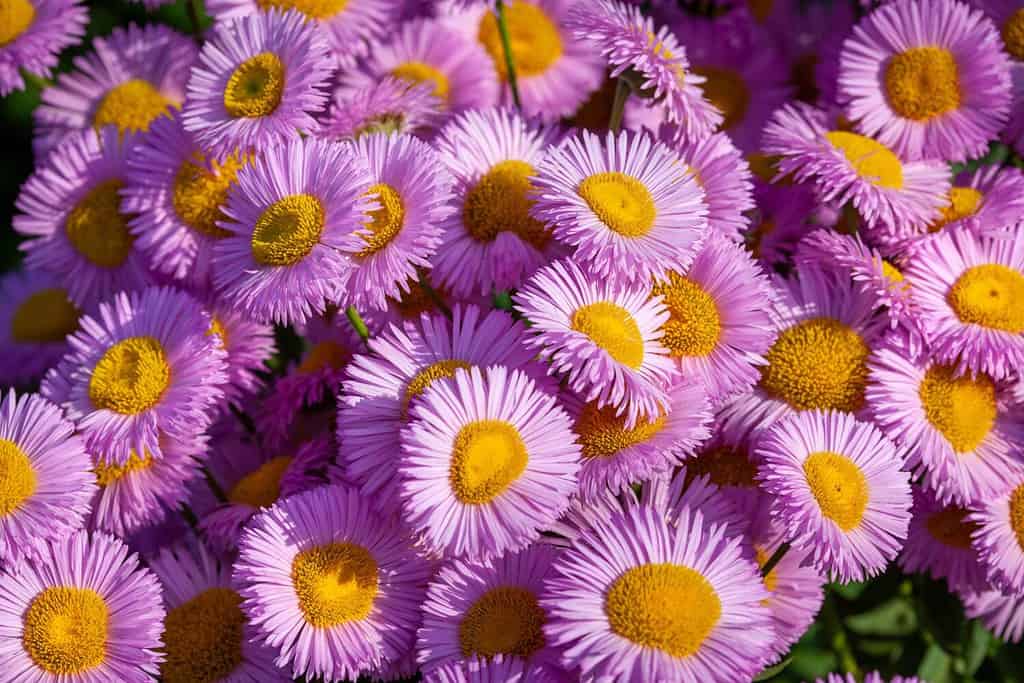
Asters are a fantastic choice for those looking to add some vibrant colors to their garden during the fall season. These flowers are a breeze to grow and are a great addition to any wildflower garden. Typically blooming during late summer or early fall, asters add a unique interest to your outdoor space during the latter part of the growing season.
One of the most significant advantages of having asters in your garden is that they attract pollinators such as bees, butterflies, and hummingbirds. These creatures play an essential role in maintaining healthy ecosystems and supporting biodiversity by aiding in cross-pollination.
Furthermore, asters are relatively easy to maintain after they have established themselves and can thrive even in poor soil conditions. While they prefer full sun exposure, they can also tolerate some shade if necessary. Compared to other annual flowers, asters have a longer lifespan, with some cultivars living up to ten years or more.
If you’re searching for a stunning perennial flower that’s easy to care for and offers significant ecological benefits, consider adding aster (Symphyotrichum oblongifolium) to your wildflower garden this year!
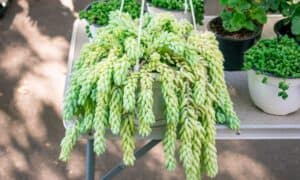
The Blanket Flower is a type of flowering plant that has bright, colorful petals and a distinctive appearance. This plant is often found in gardens and landscapes, as it adds a pop of color and visual interest to any space. The Blanket Flower is easy to care for and can be grown in a variety of conditions, making it a popular choice for both novice and experienced gardeners alike. Whether you’re looking to add some color to your yard or simply want to enjoy the beauty of nature, the Blanket Flower is an excellent choice.
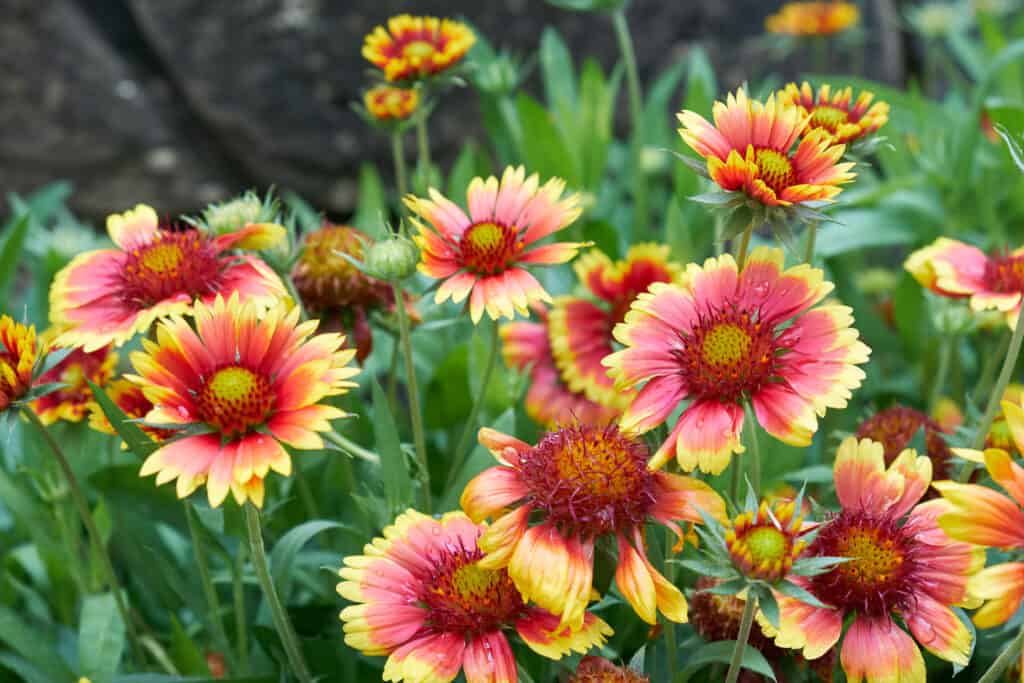
There is a wide variety of blanket flowers to choose from, each with its own unique characteristics and cultivars. Gaillardia aristata, also known as blanket flower, is a native North American plant that can grow up to two feet tall and has beautiful daisy-like flowers with red or yellow petals radiating from the center disk. The best part about these flowers is their ability to attract important pollinators like bees and butterflies, making them a great addition to any garden.
Blanket flowers are relatively low-maintenance and prefer full sun and well-drained soil, but they can tolerate drought conditions once established. To encourage continued blooming throughout the growing season, it’s recommended to deadhead spent blooms. If you’re looking for an easy-to-grow wildflower that adds vibrant color to your garden while also attracting pollinators, blanket flowers are definitely worth considering! Another great option is the wild blue flax.

The blue flax wildflower, scientifically known as Linum perenne var. lewisii, is a breathtaking addition to any garden with its bright blue petals. Not only is it visually appealing, but it also holds great historical significance as it was used by indigenous people for both practical and medicinal purposes. Wild blue flax thrives in full sun and well-drained soil, and can be grown in a variety of settings such as meadows, rock gardens, or containers. Even in areas with heavy shade or clay soils, with proper care, it can still flourish. Whether you’re an experienced gardener or simply appreciate nature’s beauty, the wild blue flax is definitely worth considering. Another beautiful flower to consider is Candytuft.
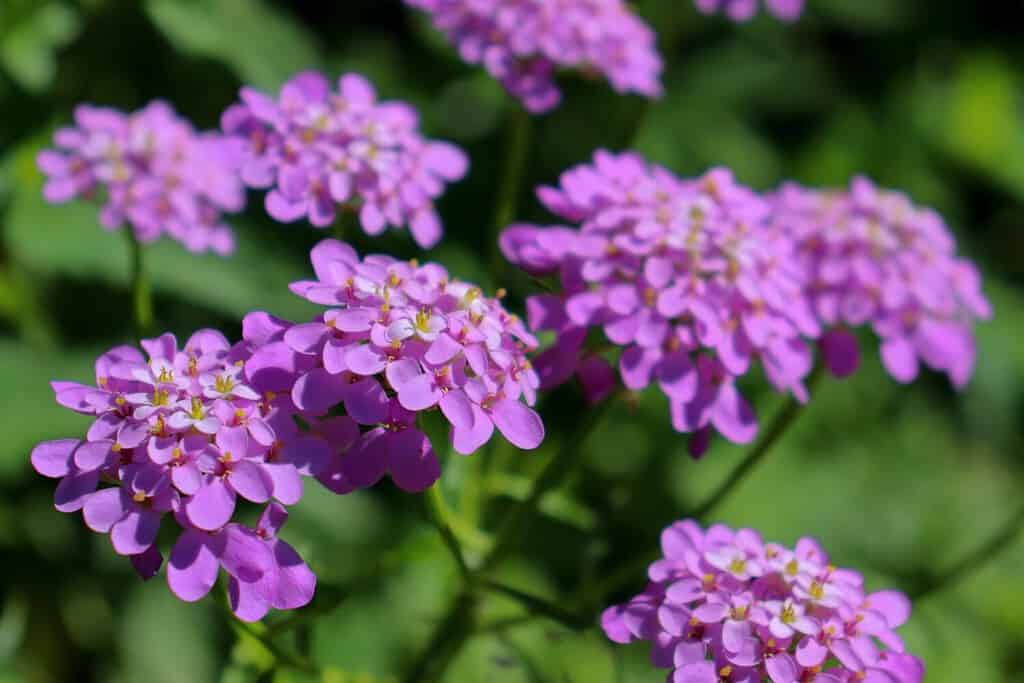
Candytuft, also known as Iberis umbellata, is a stunning flowering plant from the Brassicaceae family that has become widely popular around the world because of its beauty and easy cultivation. Its delicate flowers come in various colors, such as white, pink, lavender, and purple, and grow in clusters on long stems. Candytuft mainly blooms in spring and can continue to do so depending on the climate conditions. It has a sweet fragrance that attracts bees and butterflies, making it an excellent choice for gardens with other plants that require cross-pollination. Growing candytuft is effortless, and it prefers well-drained soil and full sunlight exposure. This versatile plant can adapt to different garden settings like rock gardens or border edges, making it perfect for landscape projects. If you’re looking for an easy-to-care-for, breath-takingly beautiful flower, candytuft is the one for you!
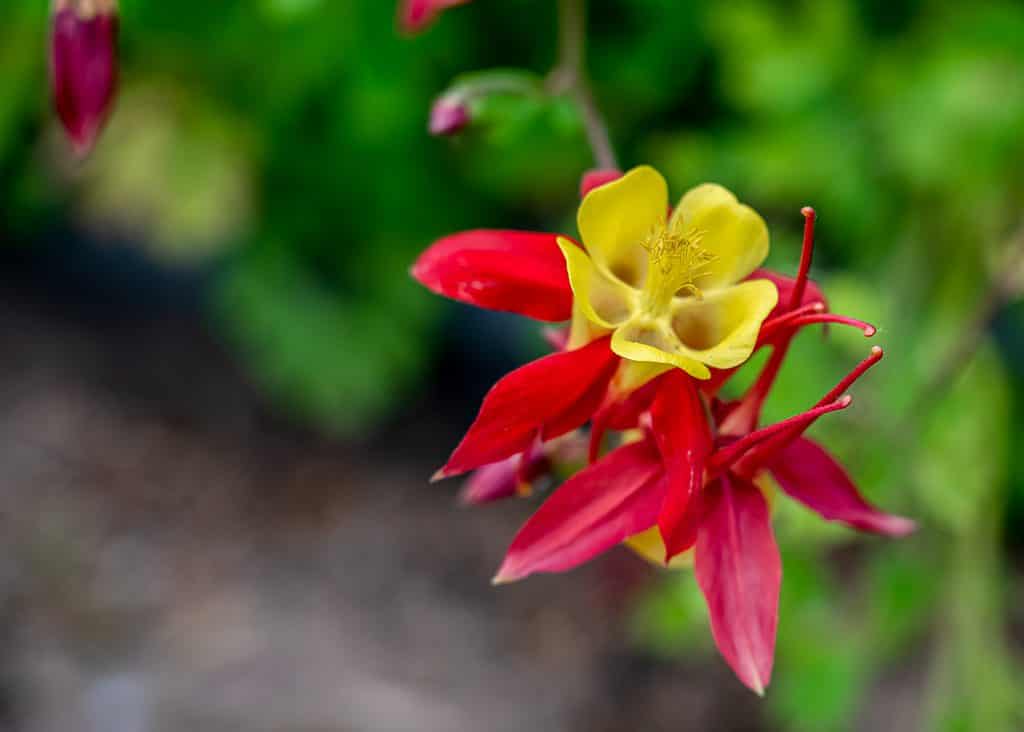
If you’re on the hunt for a stunning and distinctive wildflower to add to your garden display, look no further than the Eastern red columbine. Belonging to the buttercup family, this flower is native to eastern North America and boasts an eye-catching, vibrant red color that adds boldness and drama to any floral arrangement.
Standing up to 2 feet tall with delicate-looking stems, the Eastern red columbine bears nodding blossoms with five petals that flare outwards in shades of deep crimson red or pink hues. The flower’s inner part features yellow stamens, creating a beautiful contrast that captures the eye.
But the Eastern red columbine isn’t just a feast for the eyes – it’s also a crucial component for any wildlife-friendly garden. The nectar-rich blooms attract hummingbirds, bees, butterflies, and other pollinators, making this wildflower a must-have for any nature enthusiast.
With dozens of different columbines to choose from, the Eastern red columbine stands out as a unique and magnificent wildflower that will elevate your garden display to the next level.
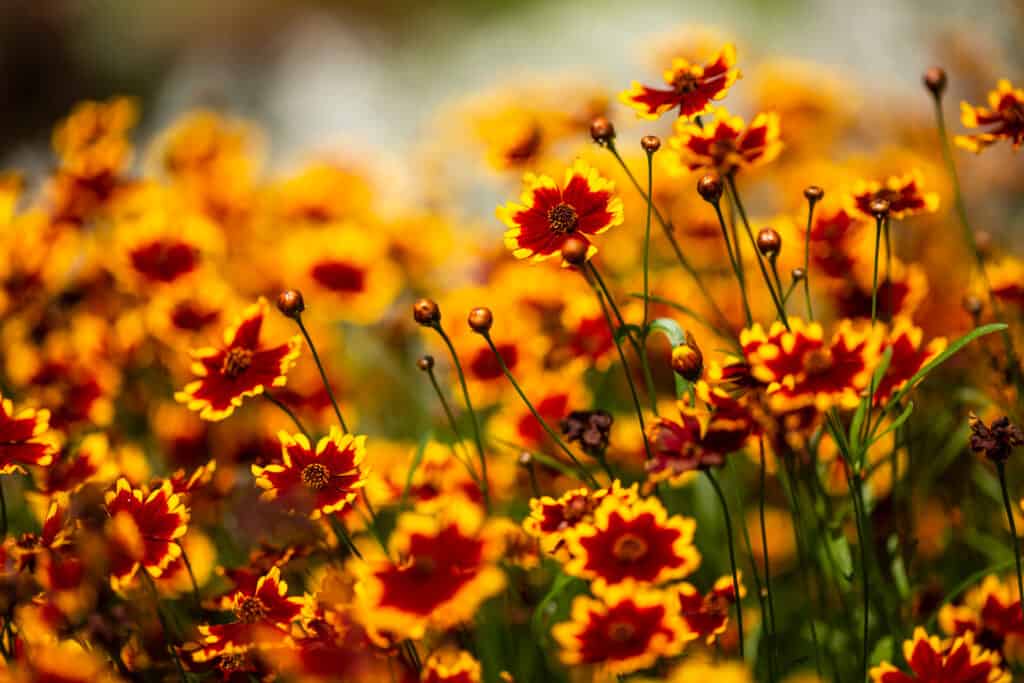
Coreopsis, also known as tickseed, is a perennial plant that originates from the Asteraceae family and is indigenous to North America. It thrives in a variety of environments such as open fields, prairies, and roadsides. The plant’s lanceolate leaves grow up to 4 inches long and are arranged in pairs on the stem. Its beautiful yellow flowers, with a daisy-like appearance and 8-10 petals around a small central disk, bloom profusely throughout spring and summer, attracting pollinators such as bees and butterflies to your garden. Coreopsis is an easy-to-grow and low-maintenance plant, making it perfect for novice gardeners. They prefer well-drained soil with full sun exposure but can also tolerate some shade. Once established, they are quite tolerant of drought and require minimal watering. By adding coreopsis plants to your garden, you not only enhance its beauty but also support the local ecosystem by providing nectar sources for pollinators. Another fantastic option to consider for your garden is the Maximilian Sunflower.
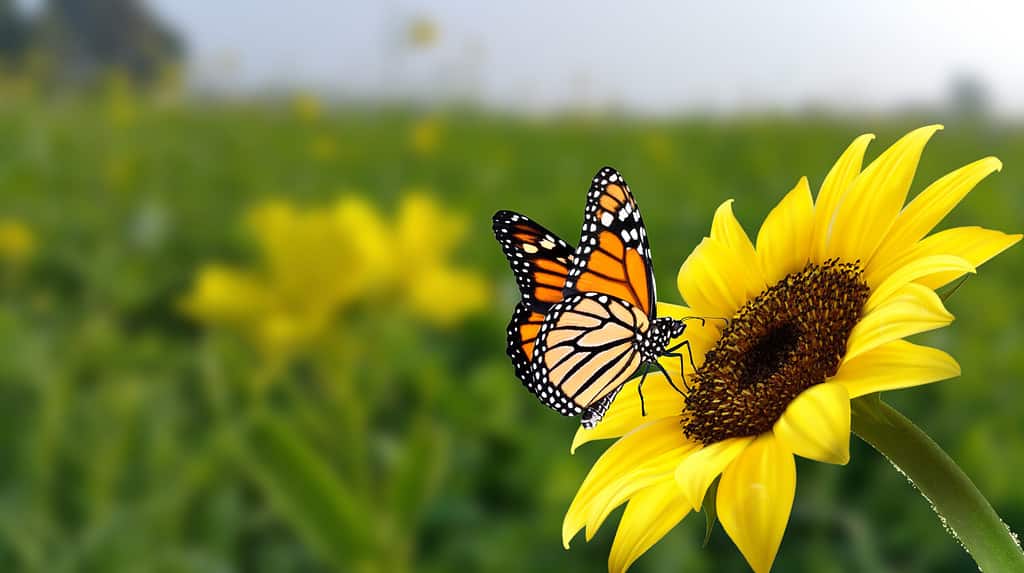
Butterflies and birds adore wild sunflowers, especially the Maximilian sunflower or Helianthus maximiliani, a magnificent perennial flower from the Asteraceae family that can grow as tall as 10 feet with a spread of 3-4 feet. Its distinguishing feature is the numerous bright yellow petals surrounding a dark center disk that bloom during late summer and attract pollinators such as bees, butterflies, and birds. This plant prefers full sunlight and well-drained soil but can also tolerate some shade and moderate watering during dry spells. The Maximilian sunflower self-seeds readily if left unattended, making it an excellent choice for naturalizing areas or adding color to wild gardens. Apart from their ornamental value, these flowers are ecologically beneficial, serving as food sources for wildlife and used medicinally by indigenous communities throughout history. All in all, the Maximilian sunflower is a remarkable addition to any garden or landscape setting that offers both aesthetic beauty and environmental importance.

The blazing star, or Liatris spicata, is a brilliant wildflower that can elevate the appearance of any garden with its vibrant and colorful appearance. This beautiful plant is native to North America and belongs to the family of Asteraceae. With its tall spikes and dense cylindrical shape, it blooms with stunning purple or white flowers that create a visually pleasing sight. The blazing star features long stems and grass-like leaves at the base and provides late-season interest in the garden, blooming from mid-summer until early fall. Apart from its aesthetic appeal, it also serves as a valuable source of nectar for pollinators like bees and butterflies. Furthermore, it is easy to maintain, thriving in full sun exposure and partial shade. For those looking to enhance their gardens with an attractive and low-maintenance plant that attracts beneficial insects and adds color well into the fall season, the blazing star is an excellent choice.
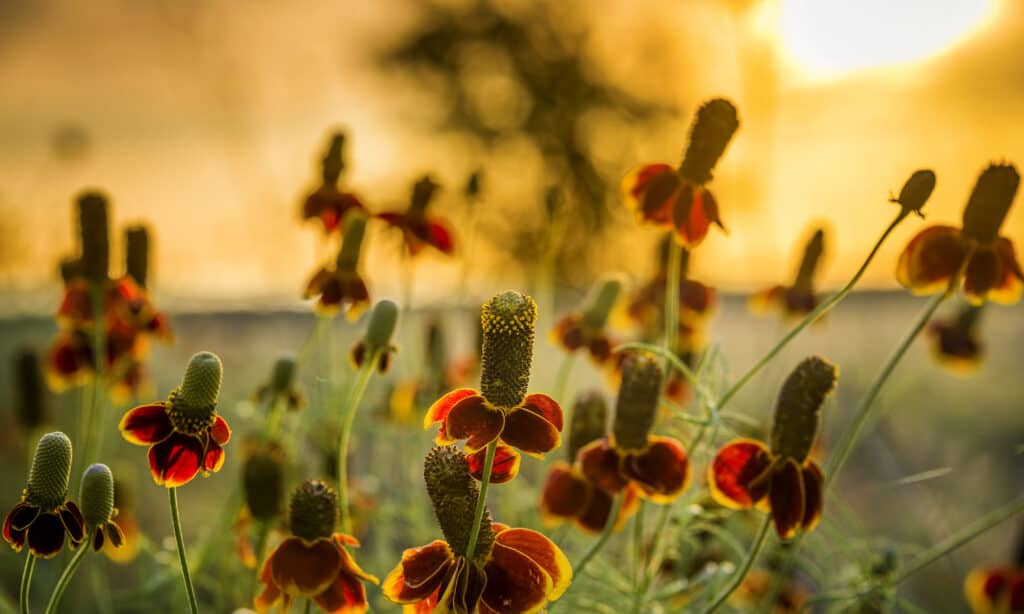
If you’re looking for a unique and stunning wildflower to add to your garden, the Mexican hat flower is definitely worth considering. This North American native can be found in fields, meadows, and prairies all across the continent. The name of this flower comes from its shape, which resembles a small sombrero. The center forms a tall column or cone that is surrounded by drooping petals in vibrant shades of red, yellow, and orange. During the blooming season from June to September, bees, butterflies, and other pollinators are attracted to its nectar.
The Mexican hat flower is a hardy perennial that is easy to grow, making it perfect for those who want an eye-catching addition to their garden without having to spend too much time maintaining it. It prefers full sun but can tolerate some shade as well. Additionally, it likes well-drained soil, but it is adaptable to various types of soil as long as it is not too wet.
All things considered, the Mexican hat flower is an excellent choice for those who want to attract beneficial insects and add some whimsy to their garden. It is low-maintenance, beautiful, and unique, making it a perfect addition to any garden.
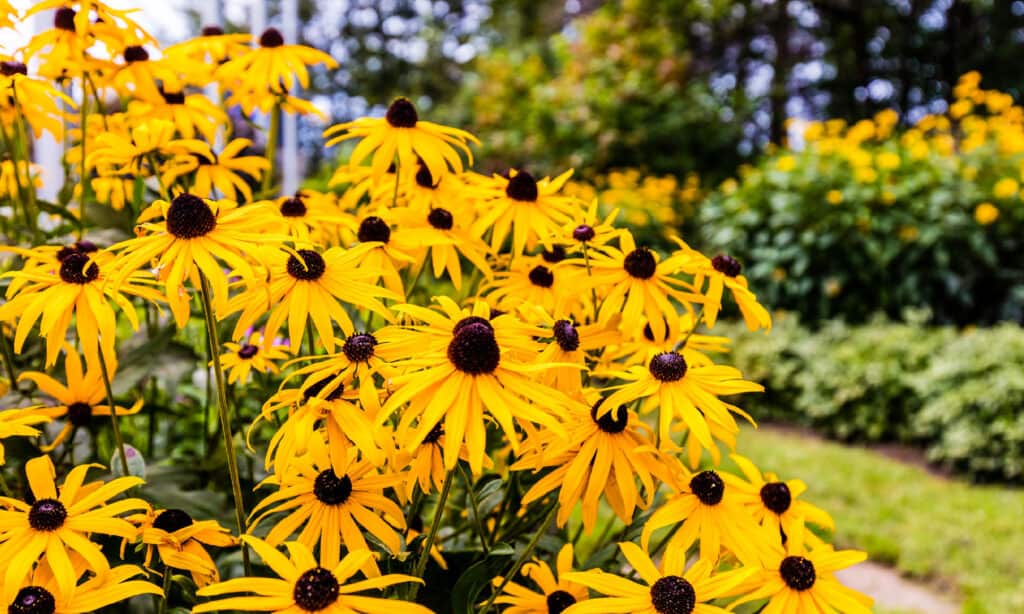
The black-eyed Susan is a perennial flower that is effortless to cultivate and produces numerous blooms. It belongs to the Aster family and is native to North America, growing up to 3 feet tall with yellow or orange petals and brown centers. Its name comes from the dark center, resembling an eye, giving it the title “black-eyed Susan.”
These wildflowers are excellent for attracting pollinators such as bees and butterflies, making them a perfect addition to any garden. They can grow in full sun or partial shade, accommodating various growing conditions.
Maintenance requirements for black-eyed Susans are relatively low, thriving in well-draining soil with moderate watering needs. Self-seeding abilities allow them to spread throughout the garden over time.
In conclusion, black-eyed Susans are robust and appealing flowers that offer many benefits beyond just aesthetic appeal. Their easy-to-grow nature makes them an excellent choice for both experienced and novice gardeners looking to brighten their outdoor spaces with some color and vibrancy.
